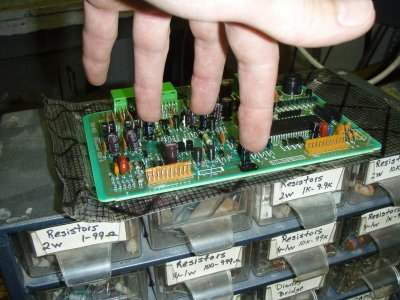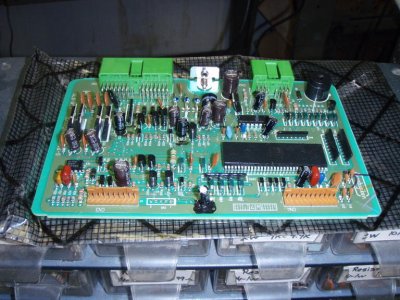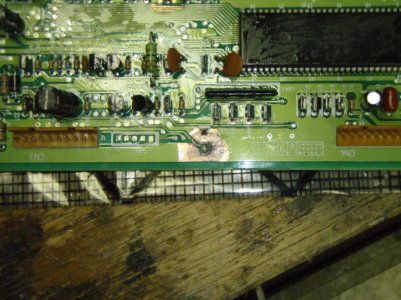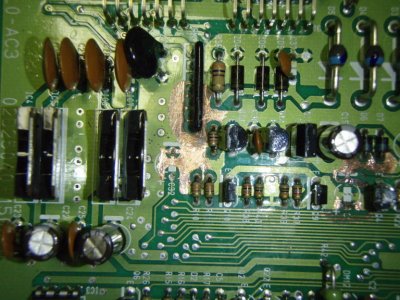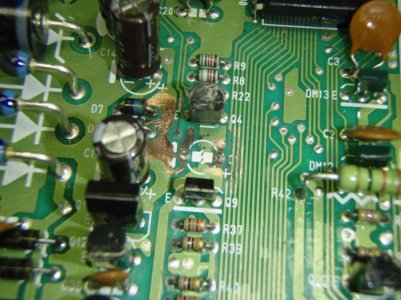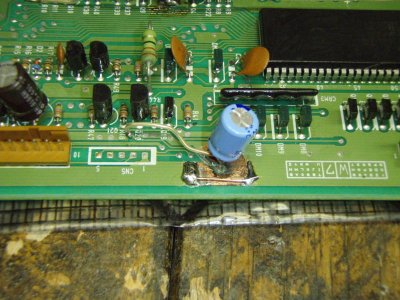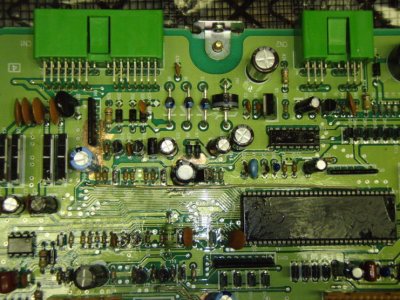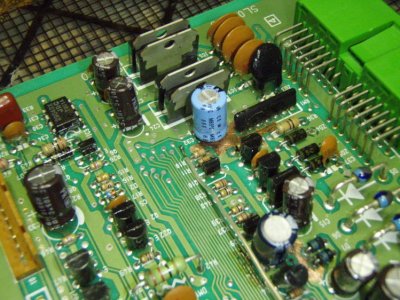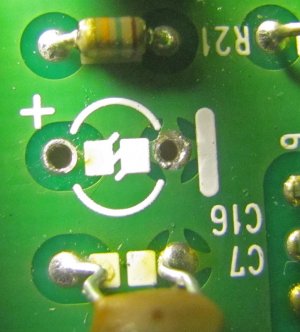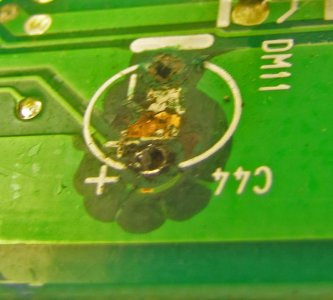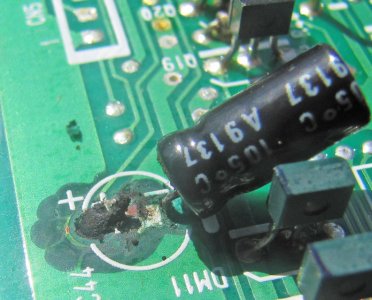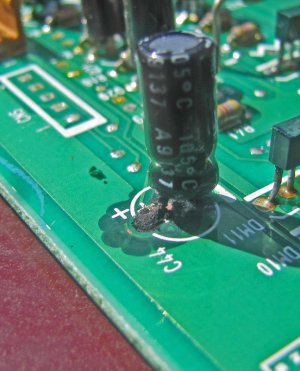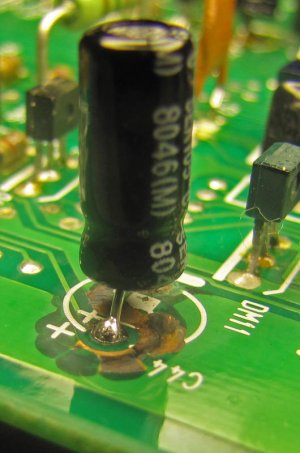I changed the coolant on my car 2 weeks ago, including the step of setting the temp at 90F so the heater core fully drains. During the process, my CCU failed - the blower stuck on high speed.
I had the CCU apart in Oct 2008 and found no signs of any capacitors failing. The CCU also passed the self-test procedure last summer when I was investigating inadequate cooling (that turned out to be a cable needed adjustment).
I'm suspicious that the root cause is a circuit design problem. The capacitors that failed in Nick675's CCU were C44, C11, and C32. On my unit, it was C44 and C11. I was lucky to catch C11 before it did any damage to the printed wiring board. C44 created a somewhat ugly mess, but all the paths are still intact. The attached pictures show C44 before and after cleanup & a new capacitor install, as well as a cleaned area under a good capacitor (C16) to show just how much damage was done by C44.
In other posts on Prime, I have seen C44 and C32 clearly idenitfied. So, there is a trend involving these 3 specific capacitors.
From a simple visual inspection of my two capacitors, this looks more like a "blowout" than a slow leak. I'm retired now and no longer have access to a component failure analysis lab and the usual assembly "goodies" in the lab. I cleaned up the board first with isopropyl alcohol (rubbing alcohol), then with some tuner/circuit board cleaner. With the rubbing alcohol, I applied some with a Q-tip, let it soak a minute, then went back and "scrubbed" the area using a Q-tip soaked in more alcohol. A soft wooden toothpick also is a good tool in that it cleans the crud but doesn't damage the board.
I'll to come up with something to seal the exposed copper under C44. I have a temporary work stop in that I missed ordering one capacitor value. I'll give an update when I do the final install & test.
I remember a number of ways to quickly destroy electrolytic capacitors, including:
1. Too high an inrush current
2. Reverse polarity (not from installation, but during circuit operation)
3. Exceed the voltage rating.
Does anyone have even partial schematics of the CCU - especially in the areas involving C44, C11 and C32? There is no detail in the ETM (Electrical Troubleshooting Manual), just a box labeled "Automatic Climate Control Unit. With a schematic I might be able to determine the root cause of the capacitor failures and design simple work-arounds. One could argue the life rating of the capacitors is only 2000 hours, but the fact that failures are most prevalent in these 3 capacitors, and most "violent" in C44, suggests its not that simple. Besides, I've never heard of any failures in the same type electrolytics in the other CCU board. I've also never had an electrolytic capacitor fail in any of the electonics on my 3 other cars, all of which have more miles than the NSX, are not babied as much, and only one car is younger.
Just in case its a capacitor design defect, I've used Panasonic and CDE instead of Nichicon for the replacements. We'll see if they last for at least another 14 years.:biggrin:


